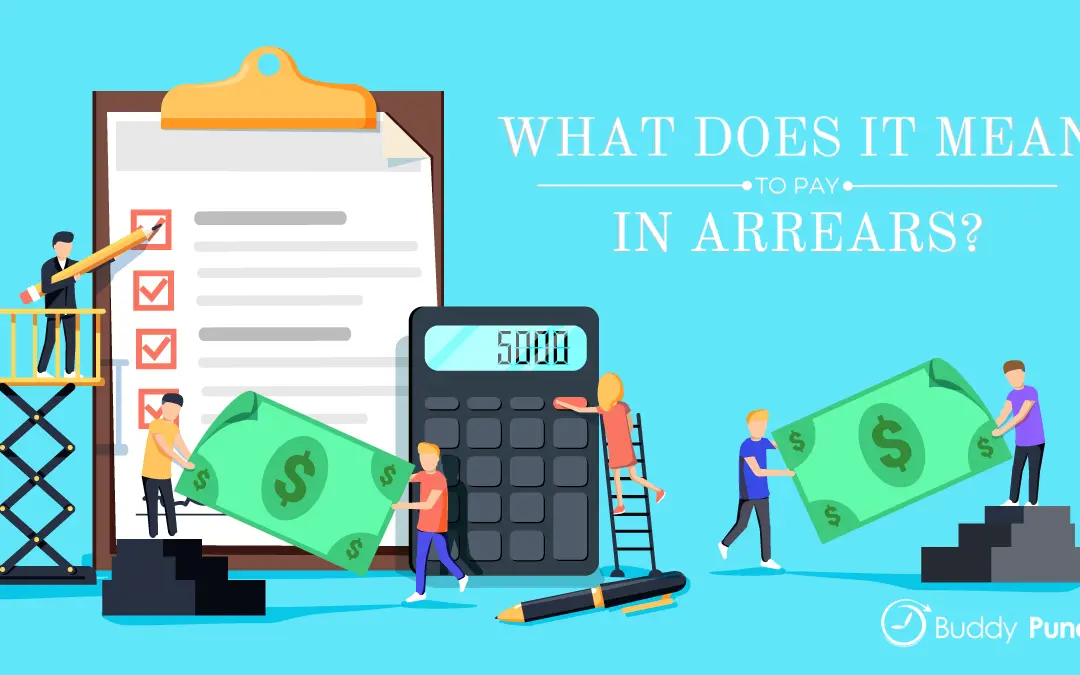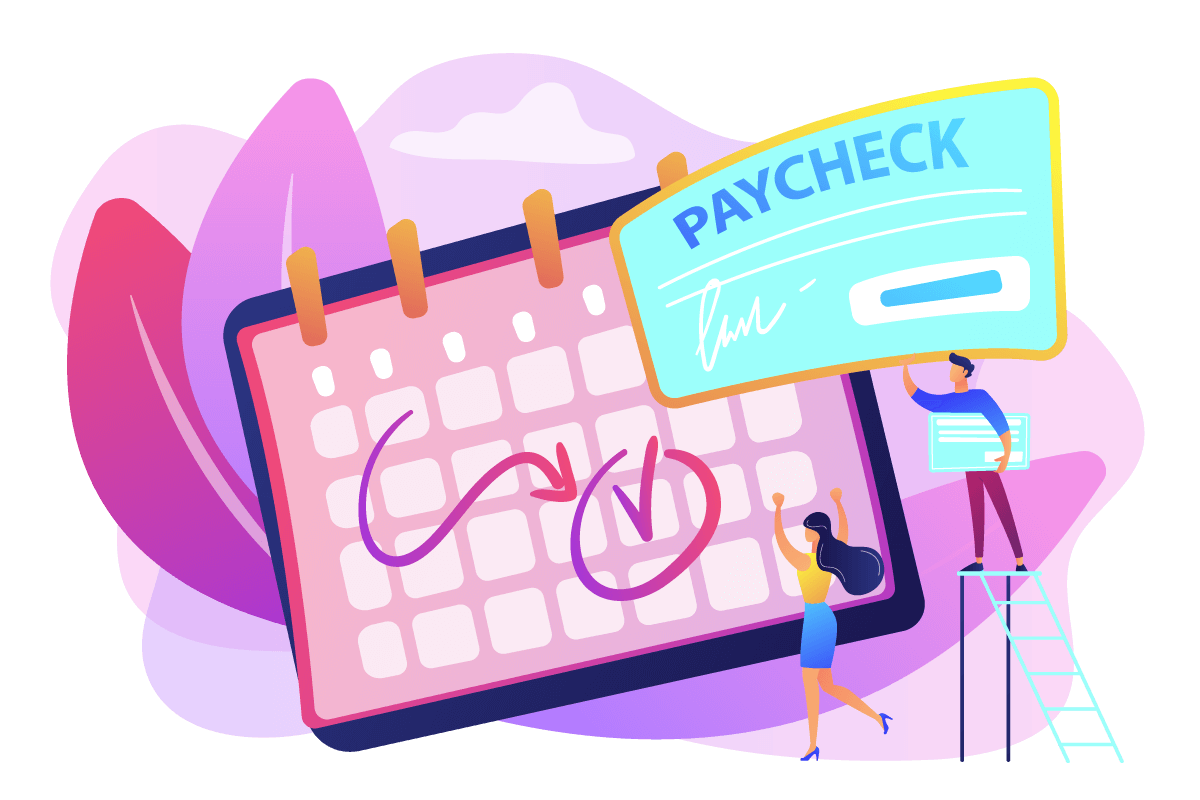What Does it Mean to Pay in Arrears?

You may have come across the term “paid in arrears” while managing your small businesses finances or when talking to an accountant, but do you know what it means and how it could help your business? Having an in-depth understanding of how paid in arrears works is vital so that you can comprehend how such payments are applied in transactions.
What Does it Mean to Pay in Arrears?
When talking about arrears accounting, there are typically two common associated meanings. Here are two ways to define arrears payments:
1. Payment in arrears can often refer to the practice of compensating your employees after they have worked their hours or compensating a service provider after the terms of the agreement has been met. This particular use of arrears accounting states that payment will be made at the end of a certain period, such as at the end of a pay period for your employees, rather than upfront.
2. Arrears can also indicate that a business is behind on payments. In such a case, the arrears amount is considered to be accruing from the due date of the first missed payment by your business. When you have an account that is paid in arrears, each subsequent payment is tacked on to the oldest payment until your account is completely caught up.
It is important to understand how paying in arrears can be used in accounting so that you know how to use and apply them to your unique business situation.
Accounts Paid After a Service is Provided
If you have a small business, arrears accounting may be very useful as it allows you to manage your cash flow better. Rather than having to pay for services or inventory at the time of delivery, you can choose to set up a policy to delay making any payments. There are several different ways to set up your payment policy – perhaps you decide you would like to pay on a “net 30” or a “net 60” basis. This means that you will:
- Pay within 30 or 60 days of receiving an invoice.
- Pay after receiving the delivery – depending on the policy you set up.
Being able to pay at the end of a certain period after receiving a product or service grants you extra time to receive payments from those that owe you money, the ability to earn more money by making more sales, and even potentially more time to secure financing to make a payment. Arrears accounting allows you to get what you need now, whether that be a product or service while giving you some extra time to ensure you are able to make payments down the road.
Catching Up On Missed Payments

On occasion, missed payments can result from payroll mistakes. An invoice for a service might be missed or a recurring payment might not have been properly processed. Small and large businesses alike can find itself in arrears even if following payments are on time. It’s important to stay on top of financial obligations (both incoming and outgoing) especially if one of your clients has missed a payment. It is a solid idea to have a policy in place for what happens whenever an account is in arrears.
Let’s say you find yourself in the following situation:
- You paid for a service in October and November, but you have a missedor late payment in December due to an accounting error.
- In January and February, you make payments for the service as usual.
- The January payment would have been added to December and the February payment added to January.
Your business would then find itself in arrears since December, as that was the beginning of your monthly payments falling behind. In order to bring your account back to current pay, you would need to make an extra payment.
Helpful Tips for Paying in Arrears
As a small business owner, finding yourself in the position of being in arrears can be difficult and straining on your finances. You may either be behind on a payment for a product or service or someone may need to pay you.
Here are some helpful tips to prevent or help the process of being paid in arrears:
- Be sure to audit your accounts payable on a regular basis to ensure that all information is up to date.
- Keep a close eye on the organizations that pay you. A business that is constantly in arrears is not good for your business and hurts your finances. If a business or individual is continually late or missing payments, it could mean that soon you will not receive any payment at all.
- If you find that a client of yours is too far in arrears, you may want to consider suspending your business dealings with them until their account is current. Doing so will help to ensure that you are not putting your business and finances at risk.
How Does Paying in Arrears Work When it Comes to Payroll?
Arrears in payroll accounting means processing the previous week’s payroll as opposed to the current week – or any postponed payroll schedule. The alternative to paying in arrears would be “current pay” which means the employer is paying their employees the day the pay week ends. This payment method would require an employer to submit an employees’ time before they even finish their work week – meaning the employer or employees would need to estimate how much time they will have worked for the remainder of the week. The employer would then be responsible for ensuring any adjustments are made during the following pay period if the hours estimated were incorrect.

There are a lot of factors that come into play when running payroll for a small business. You must take a lot of things into consideration such as federal and state tax withholdings, benefits deductions (401k contributions or health insurance), as well as payroll taxes. To better manage all of these financial responsibilities, many businesses generally pay their employees in arrears. For example, if an employee receives their paycheck every other Friday, they are collecting a paycheck for the previous pay period rather than the current pay period.
What’s the Benefit of Paying Employees in Arrears?
- More accurate hours and more time to process payroll – If you are paying your employees via the current pay method, then you will need to rush to get all of your employees’ hours in the day the pay period ends. You may even be processing payroll as your employees are still working. Using arrears as your type of payment gives you more time to process payroll and ensure that there are no inaccuracies.
- It becomes balance quickly – Once you have gotten into the flow of paying in arrears, your employees will most likely not even notice that the previous work week’s hours are next week’s payroll.
- It is easier and a better option for small business owners – When you are a small business that has limited capital to work with, current pay hours may be harder to predict. Employees could call in sick suddenly which would result in an inaccurate payroll. Arrears payroll lets you pay employees without having to make guesstimates, allowing small businesses to only deal with accurate employee salaries based purely on hours worked.
Paying in arrears also means that if one of your hourly employees does not work the designated amount of hours per week for voluntary deductions, that amount will come out of their next paycheck.
Paying employees in arrears is generally a better option than current pay for small businesses as it allows you to more precisely manage and budget your finances.
Things to Consider When Transitioning to Paying in Arrears
Transitioning from current pay to paid in arrears is never an easy process. Most employees are resistant to change – especially when it comes to money. Before you even starting the process of paying in arrears you must consider the following things:
- What are your state laws or FLSA requirements? Every state has different laws when it comes to how often an employee should be paid. To view your state laws on payroll, be sure to visit https://www.dol.gov/whd/state/payday.htm
- When should I make the transition? You should start by checking your calendar and see if there are any days that align perfectly with the old and new period. For example, the start date of the new pay period might be the same as the start date of the old period. This would be a great time to make the transition. If there are no days that align, you’ll then want to determine a new pay period date that would be the least impactful on your employees. The most important part is to make the transition as easy as possible for both yourself and your employees.
- How will this adjustment impact time-off accruals? A change in payroll frequency may impact the PTO accrual rates for your employees. Be as transparent with your employees about this process and how it may impact them.
- How should I communicate with my employes? Leadership should communicate with their employees as often as possible through the transitioning process so that employees can properly prepare for the change. Make sure that someone is available to take questions in the event employees have concerns or need more information on how getting paid in arrears works.
This list is not comprehensive by any means as there are many unique factors each business has to take into consideration. It would be best to seek guidance from an attorney as well as an accountant. An attorney can help you to ensure that all federal and state laws are being met. A knowledgeable accountant will be able to advise you on the best day to make the transition to paying in arrears and provide you with all of the details to pass onto your employees.